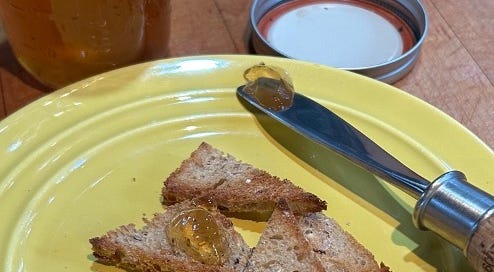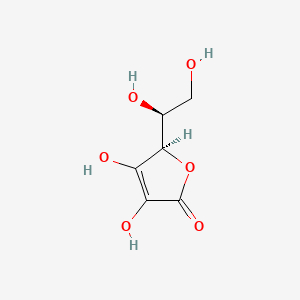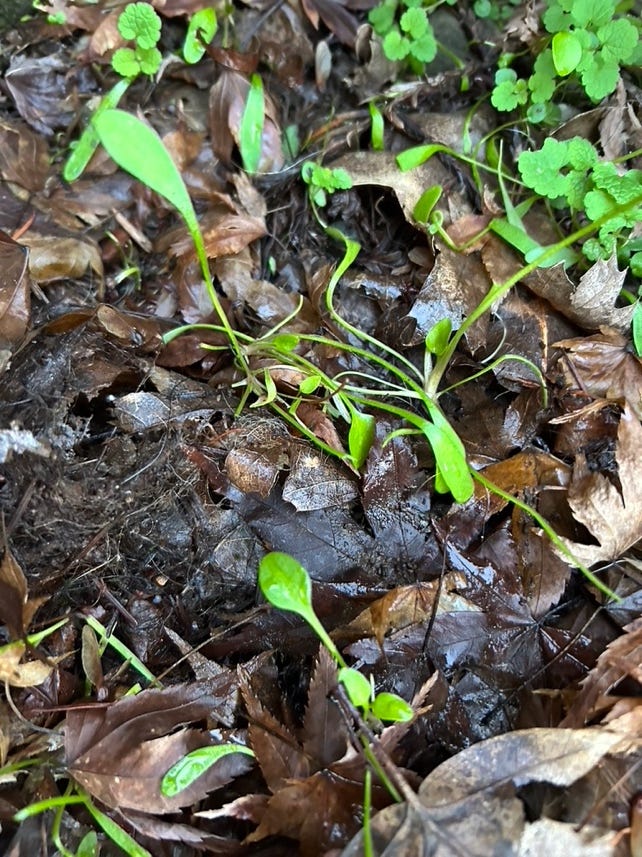Many Oncologists, as the name suggests, work only with cancer patients. For the majority of us with dual training in Hematology and Oncology, the day-to-night-to-day is still primarily consumed with cancer diagnoses, including the cross-over of hematologic cancers like leukemias and lymphomas. Intermingled are the occasional “benign” hematology problems, like anemias and bleeding and clotting disorders. Many of these may be far from benign.
My non-oncology colleagues never fail to lament the “awfulness” of my profession to me. I never fail to see the amazing opportunities for those seeking my help. One of the worst parts of my profession is that these people had to have a sometimes deadly diagnosis for me to meet them. That part really sucks.
Not uncommonly, there are referrals to evaluate “easy bruising.” While not infrequently found to relate to easily reversed surreptitious or unrecognized aspirin or NSAID use (non-steroidal anti-inflammatory drugs – ibuprofen, naproxen, etc.), such as found in many cold, headache and stomach remedies, some turn out to be a little more unusual.
How could I not remember that day in 2009?
A very nice woman was having progressive difficulties with spontaneous bruising, and she was there for my help. All of the usual studies already checked were normal, and she seemed to have no particularly unusual history, or family history. On her exam however, I noticed that she had oral bruising which is decidedly unusual in that context.
It has been routine to learn in medical school that scurvy causes that unusual type of oral bruising in the absence of other findings, though no one I knew had ever seen it in practice. It is also stereotypical of board exams to specialize in such esoterica rather than practical medicine. That may explain a lot of what you encounter in your own medical adventures.
I even had to look up how to order a vitamin C/ascorbic acid level, and when the result came back zero, then I had her repeat the test. That result just had to be a lab error for a test I was not familiar with, and vitamin C1 is not exactly a stable organic molecule.
Two-dimensional structure of the ascorbic acid (Vitamin C) molecule
The repeat vitamin C level however was also zero. ZERO. None. Zilch. I must have stared at the result for minutes, trying to make sense of what my brain was yelling at me.
So there it was, my first case of scurvy 19 years into my career, and clearly it wasn’t as if I hadn’t been trained to identify it, or wasn’t looking for it, or was specialized in a field unlikely to see this. I broke the wonderful news to her that since about 1753 the cure has been quite simple, cheap, and effective. I also told her I would never forget her, and how could I?
She was proud to call herself my first pirate patient. Yar, matey.
Aye Ye Scurvy Dog!
This insult just doesn’t work in my opinion. Dogs produce their own ascorbic acid, which we call vitamin C, so it is in fact not a “vitamin” for dogs at all. Or cats for that matter.
Humans, however, do absolutely require vitamin C with regularity – as we do not store vitamin C in our tissues.
But why? In her history, I noted she had had bariatric surgery, which routinely causes different degrees of malabsorption (except the gastric sleeve procedure), and as a result those patients are typically committed to taking a pile of supplements for the rest of their hopefully longer lives as a result of the surgery.
Five years later to the month, another patient presented identically, though this time I knew how to order the test, and this time only submitted it once. There it was again.2 Zero. ZERO. None. Zilch. Now 24 years into my career, and I’ve got an extensive series of 2 cases of scurvy to report.
You would not be wrong to observe that’s quite an improvement over the millions of sailors and others who died of scurvy in the past few centuries of extended sea travel.
A Brief Medical-Political History of Scurvy
"The story of the defeat of scurvy at sea is an intriguing mix of pioneering achievement, bureaucratic inertia, willful neglect and the corrosive poison that patronage induced in society."3
While the science of Vitamin C, better described as ascorbic acid, was not understood until the early 1930s by Hungarian biochemist Albert Szent-Györgyi and British chemist Walter Norman Haworth, the lethality of scurvy aka Moeller's disease aka Cheadle's disease aka scorbutus aka Barlow's disease, had been recognized for millennia.4
Symptoms of scurvy were recorded in ancient Egypt as early as 1550 BCE, recognized in ancient Greece by the physician Hippocrates (460–370 BCE), and in 406 CE the Chinese monk Faxian wrote that ginger was carried on Chinese ships to prevent these observations:
rotting gums
foetid breath
swelling limbs
malaise
bruising/bleeding
death
With capabilities for lengthy sea travel greatly increased in the three centuries prior to 1800, it has been estimated that scurvy killed at least two million sailors in that time. Scurvy was well-known, and feared. Desperate men would take any 'cure' offered - urine mouthwashes, sulphuric acid, bloodletting, even burial up to the neck in sand.5 Most of them died anyway.
The First Clinical Trial
In 1747 James Lind, a Scottish Naval Surgeon newly promoted to Ship’s Surgeon6, performed an experiment that is considered by some to be the first clinical trial of medicine. Possessing what we would now call a scientific mind, it was that curiosity that led him to ask permission for testing 12 sailors suffering from scurvy, dividing them into six pairs and lodging them all in the same area in the ship’s forehold. Each pair was assigned one of several accepted contemporary treatments.7
Cider
Sulfuric acid
Vinegar
Seawater
Oranges and lemons
Paste of garlic, mustard seed, dried radish root, balsam of Peru, gum myrrh, given with barley water with tamarind and cream of tartar
After a week the trial was stopped for lack of fruit, but of the two remedies which had some effect, cider seemed to help a bit while citrus fruit essentially cured the disease. Eureka moment? Sadly, no.
Six years later, in 1753, he published his conclusions in his book “A Treatise of the Scurvy”... which contained his recommendations for avoiding and treating scurvy. That tome was a sweet, sweet 456 pages. Perfect for the casual insomniac.
His book began with a review of 54 other publications regarding scurvy, finally mentioning his own experiment about a third of the way through, and comprising a mere 5 paragraphs. (You’ve probably noticed I’m way over that already) While he was sure that citrus cured scurvy, contemporary bizarre concepts of disease,8 limitations of technology, and political favor kept the explanation for this simple cure elusive.
Though Lind did specifically recommend sailors use lemon juice to prevent scurvy, he also recommended heating it into a syrup to preserve it.
Vitamin C is heat labile – it breaks down at temperatures as low as 86F/30C. No, my Rose Hip Herbes de Provence Jelly (pictured above) is not a good source of vitamin C. It is a good source of ingenuity and sugar, however, and is both gorgeous and flavorful on lightly browned toast points. If I do say so myself.
Lind wasn’t alone in his difficulties explaining science, without the necessary science. Many still held the idea that illness was caused by an imbalance of the “humors” – black bile, yellow bile, blood, and phlegm.9
The best explanation Lind could concoct was that the combination of poor diet and moist air blocked perspiration, trapping “putrid humors.” He attributed the efficacy of citrus to opening skin pores to allow perspiration. These days, that just sounds... crazy? To his death in 1795, he was never completely confident of his work.
Ok, that’s nice, but of course, politics had to ruin everything
Other naval surgeons (none of whom were physicians) also published their ideas regarding the treatment of scurvy, and it probably comes as no surprise that the endorsed treatments were from those who were connected to persons of wealth and societal importance/popularity. Lind was not so connected, so his evidence-based recommendations were treated by the politicians with the full complement of disregard typically reserved for an unimportant scientist with an important finding.
In 1756, three years after Lind published the cure (though granted it was buried in 456 pages), the Seven Years’ War broke out between Britain and France. Roughly 1500 were killed in action. Over 133,000 died primarily of scurvy.
It is speculated that the British Navy may have prevailed against the colonies in the American Revolution were it not for scurvy.
The Royal Navy did not begin issuing lemon juice to sailors routinely until a year after Lind’s death in 1795, when his work finally found a connected benefactor in the court physician Sir Gilbert Blane of Blanefield, 1st Baronet, FRSE FRS MRCP, a Scottish physician who instituted health reform in the Royal Navy.
Well that’s that, right?
Nope, you forgot the money part. There always has to be a money part.
Limes, it turns out, were cheaper than lemons. They also just happen to contain a lot less vitamin C, but not knowing what that was, it raised significant doubt that citrus was actually helpful at all in treating scurvy.
Perhaps the one memorable thing derived of this experience is the term “limey.”
From sailors, citrus fruits and 'Limeys' to the birth of Rose's Lime Juice Cordial, the world's first soft drink — since 1867
1848-1855 — California Gold Rush
A generally hard life, it is estimated that at least 10,000 of the Gold Rush “49ers” died of scurvy. To be fair, there was also a bit of dysentery, malaria, typhus fever, and cholera causing general mayhem and death. One of the treatments/preventatives learned from the indigenous Ohlone peoples who lived around the San Francisco Bay area (and had been enslaved by the Spanish Catholic missionaries in the later 18th century), was rooreh. The new crop is just now starting to sprout around the house:
Claytonia perfoliata, commonly known as miner's lettuce, rooreh (Ohlone), Indian lettuce, or winter purslane, is an edible, flowering annual in the family Montiaceae, native to the western mountain and coastal regions of North America.
1854-1856 — The Crimean War
Infamous for its high annual death rate from disease of over 1 in 5 British troops, one third of deaths was due to cholera or dysentery. The greatest number of skin-related disease deaths were from frostbite and scurvy.
1912 — British Antarctic Expedition
At the time, there was still sufficient disagreement among British physicians, who ignored the results of the experiments by Axel Holst and Theodor Frølich which showed the effects of nutritional deficiencies and continued to accept the view, championed by Sir Almroth Wright, that polar scurvy was due to ptomaine poisoning from tainted pemmican. All five members of the exploration party appear to have died from hypothermia and malnutrition, including scurvy.
So, as to my point: Medicine by popularity and patronage has killed millions. Looking at you, DOGE, RFK Jr. & Senate Accomplices.
Latin vita ‘life’ + amine, because vitamins were originally thought to contain an amino acid.
And I now know 2 pirates. Ok, maybe 3 including me. (Years before, a referring physician colleague told me she was embarrassed to let me know that her elderly patient was forbidden by her grandchildren to see me because I have earrings, “and only pirates and gays have earrings.”)
As we say, “things come in 3’s,” so I have yet to see another case or three.
Just say “Never” to Amazon and complicit embarrassment Jeff Bezos:
Harvie, David.
Limeys. The true story of one man's war against Ignorance, the Establishment and the deadly Scurvy. Sutton Publishing. 2002. ISBN 0-7509-2772-0.
https://www.abebooks.com/9780750927727/Limeys-True-Story-Mans-Against-0750927720/plp
As the human brain is wont to do, a lack of understanding feeds a wild imagination, not infrequently with a poor conclusion. In the Salem Witch Trials between February 1692 and May 1693, more than 200 people were accused, 30 were found guilty, and 19 were executed by hanging. Another died under torture and at least five died in disease-ridden jails. In 2022, the last convicted Salem witch, Elizabeth Johnson Jr., was officially exonerated, 329 years after she had been found guilty. Her exoneration was inside a state budget signed by Massachusetts Governor Charlie Baker, concluding the successful lobbying campaign by Carrie LaPierre, a Massachusetts teacher, and her eighth-grade civics class.
Until the late 1800s, “surgeons” were not physicians, but more likely to be barber-surgeons using the same haircutting tools. They learned through observation and apprenticeships. Though routinely referred to as a Scottish physician, James Lind became a physician the year following his experiment to treat scurvy. So no, a physician did not determine the cure for scurvy. There are many surviving references to this historical distinction. In California to this day, my license indicates I am a “Physician And Surgeon.”
In 1879, Mary Baker Eddy founded Christian Science, wholly rejecting contemporary medical practice and instead endorsing prayer healing. At the time it should be noted that prayer healing was on par with medical practice for the treatment of measles, as was doing nothing at all. Wisdom comes with age, but sometimes age comes alone, as with RFK Jr.
To this day we refer to circulating antibodies, such as we produce from getting the extremely effective mumps, measles and rubella vaccine (MMR) that does NOT cause autism, as part of the “humoral immune system.”











Amazing. My goal is always to learn something new every day of the week. You have provided enough for me to learn every day for a month. I write this as the mum of a son who was diagnosed with a rare type of lung cancer when he was 10 years old. These many years later he is 38 years old and healthy for which I thank the stars and oncologists.
Thank you, Johnny.
Amazing to see the numbers here -- throughout history -- as if such simple failures of imagination could occasion such losses then, as our failures more recently to check billionaire greed may incur yet even higher costs in our near future.